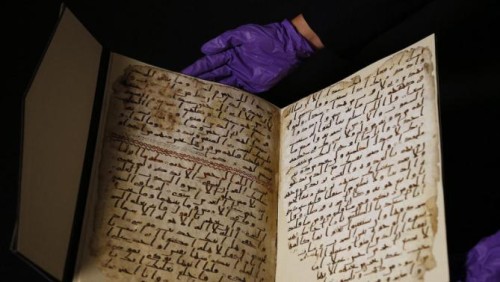Experts have declared a manuscript found in an archive at the University of Birmingham in Britain is one of the world’s oldest fragments of the Qur’an.
Carbon testing of the pages of Islam’s holy text dated it between 568 and 645 AD, during the time of the Prophet Muhammad.
“The person who actually wrote it could well have known the Prophet Muhammad,” Professor David Thomas said. “He would have seen him….He would maybe have heard him preach. He may have known him personally — and that really is quite a thought.”
The fragment is part of a collection of Middle Eastern manuscripts in the university’s Cadbury Research Library. Consisting of two parchment leaves, it shows parts of Suras (chapters) 18 to 20, written with ink in an early form of Arabic script known as Hijazi.
The small pieces of the manuscript, written on sheep or goat skin, sat in the library for more than 70 years within a later version of the Qur’an when a visiting scholar noted the discrepancy between the texts –– the Hijazi script of the earlier parchments sat alongside the Kufic of the rest of the work. More than 20 years later, Alba Fedeli, an Islamic studies specialist from Italy, began a Ph.D. researching the mystery, and Birmingham sent a small piece of the manuscript to Oxford University for the radiocarbon dating.
The fragments were part of a collection of more than 3,000 documents from the Middle East amassed in the 1920s by Alphonse Mingana, a theologian and historian who was born in present-day Iraq.
Muslims in Birmingham celebrated the news. Mohammad Afzal, chairman of the Birmingham Central Mosque, said, “I am honored to see this manuscript, which is unique. This goes back to the very early stages of Islam. All the Muslims in the world would love to see this manuscript.”
The manuscript will be displayed in the University of Birmingham’s Barber Library in October.

